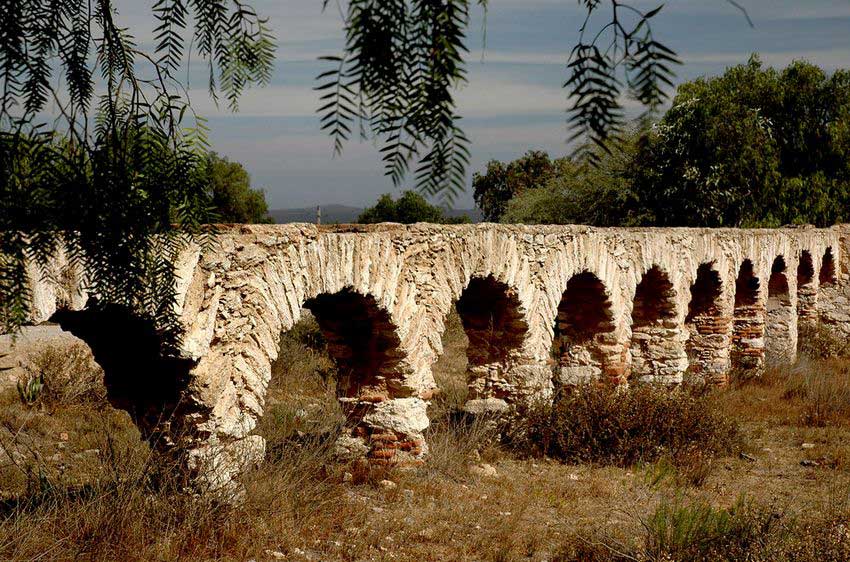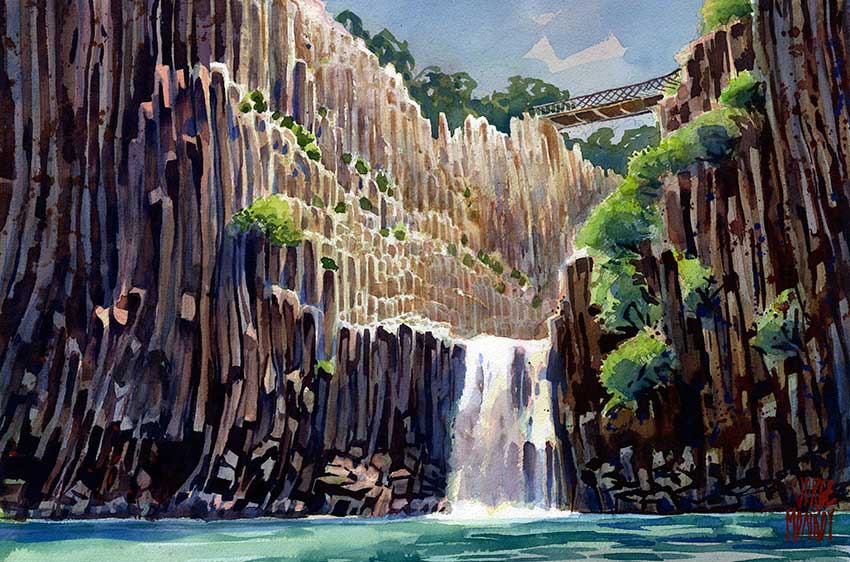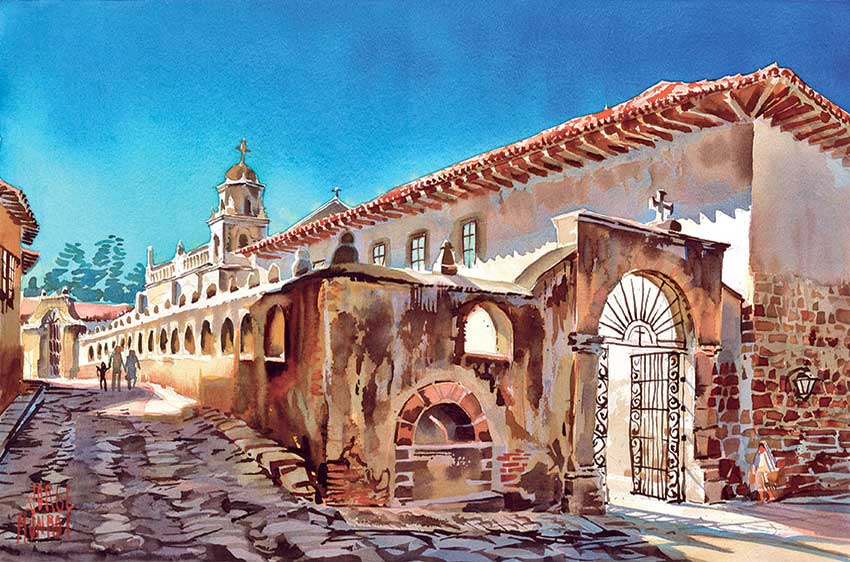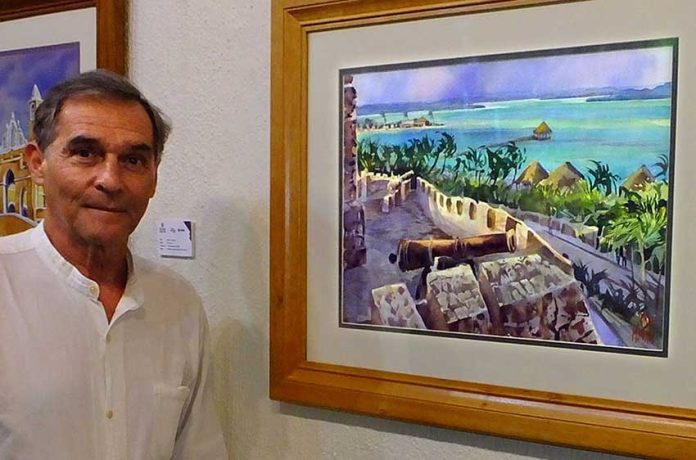The Guadalajara Chamber of Commerce has put on display a collection of 44 watercolors celebrating Mexico’s Pueblos Mágicos (magical towns) program, all of which are by local artist Jorge Monroy, whose mural Under the Wings of Mercury can be seen in the chamber’s foyer.
Mexico’s Secretariat of Tourism launched the magical towns in 2001 in recognition of the fact that tourists come to the country not only to bask in the sun on a beach, but to experience Mexican hospitality and culture.
Thirty-two towns were originally selected for the program and over the years the number has grown to 121. Last year it was announced that President López Obrador would cancel the program, but in February of this year the tourism department said it would continue “more strongly than ever.”
All of the paintings in the Guadalajara exhibition originally appeared in the Sunday edition of the newspaper El Informador which, over a period of some 20 years, has published around 1,000 of Monroy’s works.
“The Chamber of Commerce wanted to celebrate the Pueblos Mágicos,” Monroy told me, “so they asked the Jesús Álvarez de Castillo Foundation to lend them around 50 of my paintings representative of the most beautiful magical towns in every state of the republic. Of course, they made sure to include all of those in Jalisco, which now number eight.”

While accompanying Jorge Monroy through this outstanding collection of canvases, I discovered that the painter could not only speak about every one of these sites, but could recall minute details of his visit, down to what he had eaten for lunch when he was there and where he had eaten it.
When I asked him to name his 10 favorite Pueblos Mágicos, he said it just could not be done because “each one is different” and I suddenly realized this was the same answer I have always given to people who ask me to name my favorite hiking trail.
“OK,” I said, “why not just tell me a bit about a few places where, after visiting the streets of the pueblo itself, I can wander out of town and find even more attractions to enjoy.”
“Here’s a good example of that,” said Monroy, stopping in front of one of his paintings. “This is the town of Huasca de Ocampo in Hidalgo and by chance it was the very first town to be designated a Pueblo Mágico, back in 2001, by the Secretariat of Tourism. Not only is the town itself beautiful, but it is surrounded by spectacular historical and natural attractions.
“In colonial times it was important for its mines and, in fact, mining still goes on there today. Great riches were generated for Spain and as a result, lavish haciendas were built. Two of the most notable are San Miguel Regla and Santa María Regla, both of which are now luxurious hotels. Then, just minutes away, you have the Basaltic Prisms, which are polygonal columns with five or six sides, ranging in height from 30 to 50 meters, among the longest in the world and much admired by Alexander von Humboldt in the early 1800s.
“The whole area is so extraordinary that it was recently incorporated into the Comarca Minera Geopark, a new member of the UNESCO Global Network of Geoparks.”

As we continued walking along the long corridor at the Cámara de Comercio, we came to Monroy’s painting of the magical town of Coatepec in Veracruz. Its streets are beautiful and well-preserved, he told me, and it is located at so high an altitude that both the town and its surroundings are often shrouded in fog.
“This whole area,” he said, “is dedicated to coffee production and on the outskirts of the town you find fincas cafeteras, beautiful coffee plantations surrounded by exuberant vegetation. Many of the local mansions have now been converted into hotels and all around you find gorgeous waterfalls. One of the nicest in my opinion is the Cascada de Xico.”
While we perused his collection of paintings, Jorge Monroy pointed out many other Pueblos Mágicos where the magic continues beyond the confines of the town. One of these was Mazamitla, which is located in Jalisco, 28 kilometers due south of Lake Chapala at an altitude of 2,240 meters.
“The streets are charming, the church is remarkable for its elements of Chinese architecture, and the town is located in the middle of the Sierra del Tigre, famous for its log cabins hidden away in a beautiful and peaceful pine and oak forest.”
Not to be missed, said the painter, is the 30-meter El Salto waterfall just south of Mazamitla and the curious Los Cazos cauldrons carved into the bedrock apparently for fermenting mezcal.
Over the years, Monroy continued, “I’ve learned that some of the most interesting Pueblos Mágicos — with plenty to explore on their outskirts — are the old mining towns, such as San Sebastián del Oeste in Jalisco, Real de Catorce in San Luis Potosí, Real de Asientos in Aguascalientes and Mineral de Pozos in Guanajuato. Actually, a visit to any of Guanajuato’s many ghost towns is always an adventure.”

At the end of the Cámara de Comercio’s U-shaped art gallery we came to the last painting in the exhibition, showing the magical town of Bacalar in Quintana Roo. “All I can say is that this town is situated on the shore of the most beautiful lagoon in the world: La Laguna de los Siete Colores (the Lake of Seven Colors). Its beauty is simply indescribable, but I hope I have caught a little of it in my painting.
“Bacalar is enchanting all by itself: it was a fortress and the old cannon are still there. All around Bacalar there are amazing archaeological sites like Kohunlich and Chetumal; there’s the enormous Biosphere Reserve of Sian Ka’an, which stretches all the way to Tulum; there’s dazzlingly beautiful Mahahual beach and then, just to the south, you have Belize: more than enough magical sites to keep even John Pint busy!”
• Jorge Monroy’s paintings of the Pueblos Mágicos will be on display — without charge — at the Guadalajara Chamber of Commerce until March 20.
The writer has lived near Guadalajara, Jalisco, for more than 30 years and is the author of A Guide to West Mexico’s Guachimontones and Surrounding Area and co-author of Outdoors in Western Mexico. More of his writing can be found on his website.
[soliloquy id="73979"]
